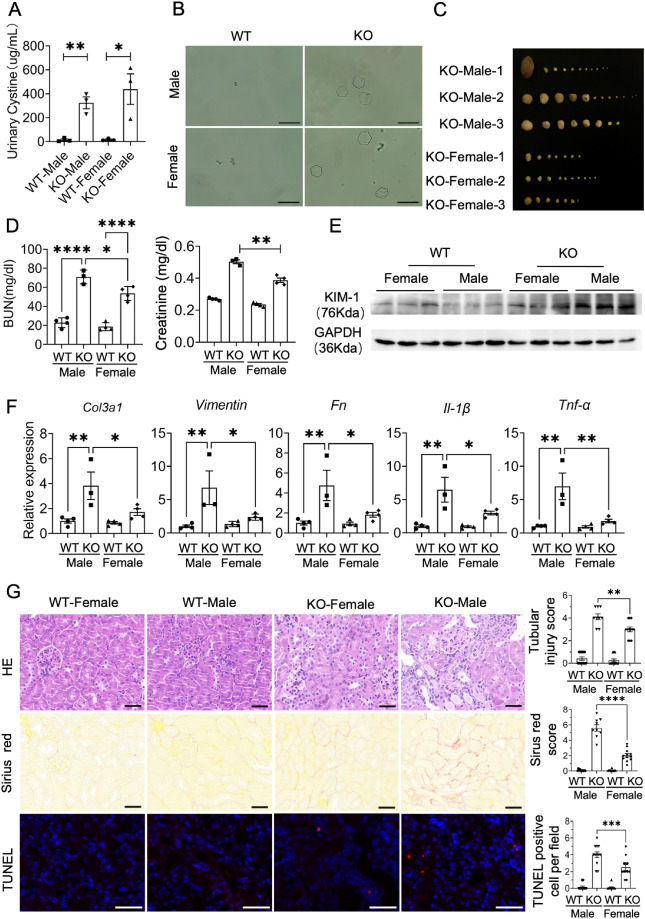
Mitochondrial SLC3A1 regulates sexual dimorphism in cystinuria


Cystinuria is the most common inheritable cause of kidney stone disease, with males exhibiting a higher susceptibility than females. However, the cellular origin and underlying mechanisms of sex differences in cystinuria remain elusive. This study aims to investigate the mechanism using Slc3a1 knockout mice. We found that male mice lacking the Slc3a1 gene exhibited more severe stone formation and renal injuries, unaffected by double knockout of another sex-dependent-expressed cystine transporter Slc7a13 or orchidectomy procedure. Further investigations revealed aberrant mitochondrial functions as the primary factor contributing to the severity of cystinuria in Slc3a1 knockout male mice. Mechanistically, higher SLC3A1 levels in male kidneys could enhance mitochondrial functions through modulation of mitochondrial NAD+ uptake primarily in proximal tubule cells. Supplementation with an NAD+ precursor rescued the sex differences caused by Slc3a1 knockout. Our studies uncover the crucial role of Slc3a1 in mitochondrial functions and provide novel insights into potential interventions for sexual dimorphism of cystinuria.
